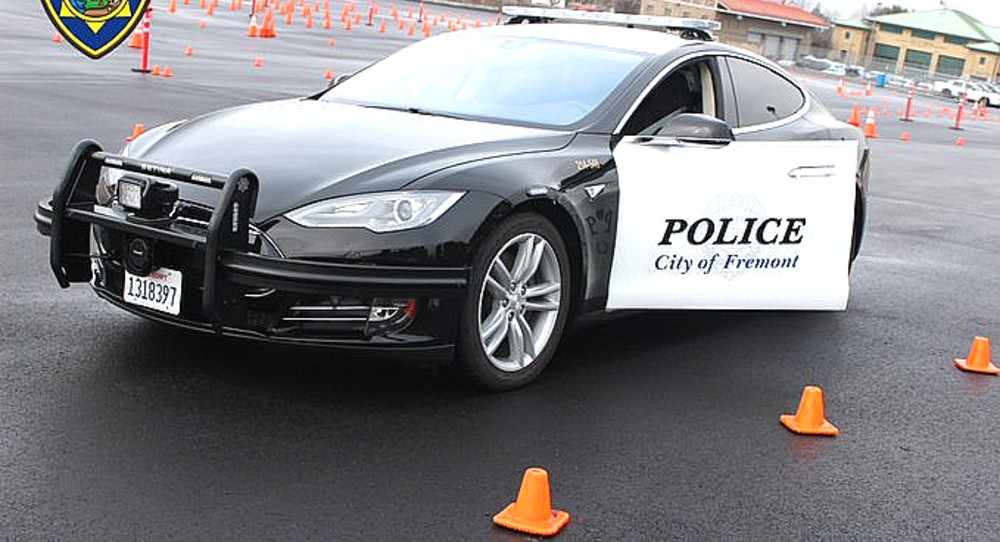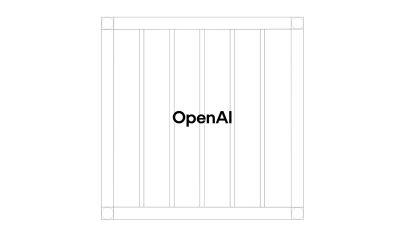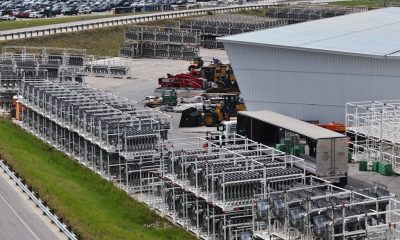

News
Tesla Model S police cruiser not to blame for mishap, says Fremont PD
The Fremont Police Department released a statement on Thursday evening clarifying reports that its Tesla Model S cruiser ran out of battery during a high-speed pursuit on Interstate 680.
On Monday, the Tesla Model S gained national attention as a journalist contacted the department requesting information regarding a high-speed chase from the Irvington District of Fremont, California to Washington Boulevard. The chase eventually ended up on Interstate 680, heading south toward San Jose, CA. The journalist released a portion of the police scanner recordings from the chase, where the officer driving the Model S told other units in the pursuit that he would have to abandon due to his battery running low.
However, the suspect then drove onto the shoulder of the interstate, passing a vehicle in an increasingly unsafe manner. The Sargeant of the Fremont PD then made the decision to halt the pursuit of the vehicle as it was becoming more of a public safety risk. All three police units disengaged the vehicle, and the chase was stopped after about 10 miles.
When the Sargeant made the announcement to stop pursuing the vehicle, the Tesla Police Cruiser was at a nearby charging station. The statement from the Fremont PD stated, “at no time did the battery of the Tesla become a factor in our ability to pursue the suspect or perform our duties. This situation, while embarrassing, is no different from cases where a patrol car runs low (or even dry) of fuel.”
Fremont’s statement noted that the journalist who released the initial story contacted the department with questions and subsequently published the article. It reached the national spotlight due to public interest. Fremont Police were sure to clarify the fact that the Tesla having to drop out of the chase could have happened to any vehicle and that they recommend each officer have at least half of a tank of gas or half a battery charge when they begin their shift. “While not policy, we recommend officers begin their shift with at least a half tank of gas or in this case, a battery charge of 50%. On this date, our officer driving the Tesla noted approximately 50% of battery life when he began his shift,” they said. The fact that the vehicle had to stop was in no way the fault of the Model S.
In fact, the department has been so pleased with their Tesla cruiser, they have already had initial talks about buying a second vehicle, most likely a Model X. “So far, the vehicle is performing extremely well, and has exceeded our expectations. We are already in initial conversations about testing a second vehicle, likely an SUV model, and we look forward to providing our initial results in the near future,” Captain Sean Washington said.
The Fremont PD stated that their Model S police cruiser has outperformed their expectations and they are extremely happy with its performance, as they have tracked the performance of the vehicle since its induction into the police force. “Over the last six months, data on range, performance, equipment, and other elements has been gathered by officers through its use as a patrol vehicle. During this time we have documented two police pursuits, where the vehicle met and exceeded expectations.”
Fremont is the location of the original Tesla Factory. The company bought the facility in 2010. Previously, it was the home of General Motors from 1962 to 1982 and eventually, Toyota also produced vehicles there. Tesla and Toyota worked conjunctively to work toward producing electric vehicles. Tesla officially opened the factory as its own on October 27, 2010.
Read the full statement from the Fremont Police Department below:
Our Department has unfortunately been in the news this week for an incident involving our electric police patrol vehicle (Tesla Model S). We first deployed the Tesla in March of this year as a fully outfitted patrol vehicle. Over the first six months, the performance feedback and initial data collection has been very positive and we are in early discussions of expanding the program. During a pursuit last Friday night, the battery charge began to run low, and we’d like the opportunity to clarify and provide additional context with regard to what occurred.
On Friday afternoon, a patrol officer checked out our Tesla patrol vehicle at the start of his shift and noticed the battery was half-charged. A typical battery at full charge ranges from 220-240 miles and during an 11 hour patrol shift, Fremont patrol officers drive approximately 70-90 miles. While not policy, we recommend officers begin their shift with at least a half tank of gas or in this case, a battery charge of 50%. On this date, our officer driving the Tesla noted approximately 50% of battery life when he began his shift. While the vehicle is routinely charged between shifts, on Friday the vehicle had just been returned from our Corporation Yard. The vehicle is regularly returning at the end of every shift with 40-60%, if not more, of the battery charge remaining.
Nine hours into the officer’s shift, at 11:05 p.m., he became involved in a vehicle pursuit that lasted a total of 8 minutes. The pursuit began in our Irvington District and traveled on Washington Blvd., before merging southbound onto I680 towards San Jose. Within minutes, two additional Fremont patrol units were behind the Tesla and in the pursuit. Additionally, the California Highway Patrol (CHP) was notified and responding. As standard protocol, once CHP has sufficient units, they take over our pursuits on the freeway.
The pursuit spanned approximately 10 miles and at times exceeded 110 mph. Regular updates regarding the speed, location, general traffic and roadway conditions were provided by the second officer in the pursuit. Just before the pursuit ended at 11:13 p.m., the officer driving the Tesla responsibly notified his cover units he was going to have to back out of the pursuit because his battery was running low. Just after they passed the Montague Expressway exit, the suspect drove on the left shoulder of the road to pass a vehicle. At that time, the Fremont Police Sergeant monitoring the pursuit gave orders to terminate to ensure public safety. All three units deactivated their emergency equipment and returned to normal driving conditions. At that point, the Tesla was driven to a nearby charging station and the additional Fremont units returned to the City. CHP located the unoccupied vehicle in the area of I680 and the Berryessa exit. At no time did the battery of the Tesla become a factor in our ability to pursue the suspect or perform our duties. This situation, while embarrassing, is no different from cases where a patrol car runs low (or even dry) of fuel.
In recent years police radio traffic has become readily accessible through phone applications and its common practice for news media and even community members to monitor and even record. On Monday, a local journalist contacted our Department requesting additional details regarding the pursuit. The journalist subsequently wrote an article and released a portion of our radio traffic. Since that time, the Department has received numerous media inquiries regarding the vehicle’s battery. Unfortunately, public interest in the original story propelled it into the national spotlight.
Over the last six months, data on range, performance, equipment, and other elements has been gathered by officers through its use as a patrol vehicle. During this time we have documented two police pursuits, where the vehicle met and exceeded expectations. Our final results and data will ultimately help us determine if the EV technology meets current patrolling applications and cost effectiveness. We remain dedicated to our continued research into the benefits of using electric vehicles and the effects they have on our environment. We hope to share our initial data and feedback soon.
Captain Sean Washington stated, “So far, the vehicle is performing extremely well, and has exceeded our expectations. We are already in initial conversations about testing a second vehicle, likely an SUV model, and we look forward to providing our initial results in the near future.”
For more information on our electric vehicle pilot program, visit www.fremontpolice.org/electricvehicle.
News
These Tesla, X, and xAI engineers were just poached by OpenAI
The news is the latest in an ongoing feud between Elon Musk and the Sam Altman-run firm OpenAI.

OpenAI, the xAI competitor for which Elon Musk previously served as a boardmember and helped to co-found, has reportedly poached high-level engineers from Tesla, along with others from xAI, X, and still others.
On Tuesday, Wired reported that OpenAI hired four high-level engineers from Tesla, xAI, and X, as seen in an internal Slack message sent by co-founder Greg Brockman. The engineers include Tesla Vice President of Software Engineering David Lau, X and xAI’s head of infrastructure engineering Uday Ruddarraju, and fellow xAI infrastructure engineer Mike Dalton. The hiring spree also included Angela Fan, an AI researcher from Meta.
“We’re excited to welcome these new members to our scaling team,” said Hannah Wong, an OpenAI spokesperson. “Our approach is to continue building and bringing together world-class infrastructure, research, and product teams to accelerate our mission and deliver the benefits of AI to hundreds of millions of people.”
Lau has been in his position as Tesla’s VP of Software Engineering since 2017, after previously working for the company’s firmware, platforms, and system integration divisions.
“It has become incredibly clear to me that accelerating progress towards safe, well-aligned artificial general intelligence is the most rewarding mission I could imagine for the next chapter of my career,” Lau said in a statement to Wired.
🚨Optimistic projections point to xAI possibly attaining profitability by 2027, according to Bloomberg's sources.
If accurate, this would be quite a feat for xAI. OpenAI, its biggest rival, is still looking at 2029 as the year it could become cash flow positive.💰 https://t.co/pE5Z9daez8
— TESLARATI (@Teslarati) June 18, 2025
READ MORE ON OPENAI: Elon Musk’s OpenAI lawsuit clears hurdle as trial looms
At xAI, Ruddarraju and Dalton both played a large role in developing the Colossus supercomputer, which is comprised of over 200,000 GPUs. One of the major ongoing projects at OpenAI is the company’s Stargate program,
“Infrastructure is where research meets reality, and OpenAI has already demonstrated this successfully,” Ruddarraju told Wired in another statement. “Stargate, in particular, is an infrastructure moonshot that perfectly matches the ambitious, systems-level challenges I love taking on.”
Elon Musk is currently in the process of suing OpenAI for shifting toward a for-profit model, as well as for accepting an investment of billions of dollars from Microsoft. OpenAI retaliated with a counterlawsuit, in which it alleges that Musk is interfering with the company’s business and engaging in unfair competition practices.
Elon Musk confirms Grok 4 launch on July 9 with livestream event
News
SpaceX share sale expected to back $400 billion valuation
The new SpaceX valuation would represent yet another record-high as far as privately-held companies in the U.S. go.

A new report this week suggests that Elon Musk-led rocket company SpaceX is considering an insider share sale that would value the company at $400 billion.
SpaceX is set to launch a primary fundraising round and sell a small number of new shares to investors, according to the report from Bloomberg, which cited people familiar with the matter who asked to remain anonymous due to the information not yet being public. Additionally, the company would sell shares from employees and early investors in a follow-up round, while the primary round would determine the price for the secondary round.
The valuation would represent the largest in history from a privately-owned company in the U.S., surpassing SpaceX’s previous record of $350 billion after a share buyback in December. Rivaling company valuations include ByteDance, the parent company of TikTok, as well as OpenAI.
Bloomberg went on to say that a SpaceX representative didn’t respond to a request for comment at the time of publishing. The publication also notes that the details of such a deal could still change, especially depending on interest from the insider sellers and share buyers.
Axiom’s Ax-4 astronauts arriving to the ISS! https://t.co/WQtTODaYfj
— TESLARATI (@Teslarati) June 26, 2025
READ MORE ON SPACEX: SpaceX to decommission Dragon spacecraft in response to Pres. Trump war of words with Elon Musk
SpaceX’s valuation comes from a few different key factors, especially including the continued expansion of the company’s Starlink satellite internet company. According to the report, Starlink accounts for over half of the company’s yearly revenue. Meanwhile, the company produced its 10 millionth Starlink kit last month.
The company also continues to develop its Starship reusable rocket program, despite the company experiencing an explosion of the rocket on the test stand in Texas last month.
The company has also launched payloads for a number of companies and government contracts. In recent weeks, SpaceX launched Axiom’s Ax-4 mission, sending four astronauts to the International Space Station (ISS) for a 14-day stay to work on around 60 scientific experiments. The mission was launched using the SpaceX Falcon 9 rocket and a new Crew Dragon capsule, while the research is expected to span a range of fields including biology, material and physical sciences, and demonstrations of specialized technology.
News
Tesla Giga Texas continues to pile up with Cybercab castings
Tesla sure is gathering a lot of Cybercab components around the Giga Texas complex.

Tesla may be extremely tight-lipped about the new affordable models that it was expected to start producing in the first half of the year, but the company sure is gathering a lot of Cybercab castings around the Giga Texas complex. This is, at least, as per recent images taken of the facility.
Cybercab castings galore
As per longtime drone operator Joe Tegtmeyer, who has been chronicling the developments around the Giga Texas complex for several years now, the electric vehicle maker seems to be gathering hundreds of Cybercab castings around the factory.
Based on observations from industry watchers, the drone operator appears to have captured images of about 180 front and 180 rear Cybercab castings in his recent photos.
Considering the number of castings that were spotted around Giga Texas, it would appear that Tesla may indeed be preparing for the vehicle’s start of trial production sometime later this year. Interestingly enough, large numbers of Cybercab castings have been spotted around the Giga Texas complex in the past few months.
Cybercab production
The Cybercab is expected to be Tesla’s first vehicle that will adopt the company’s “unboxed” process. As per Tesla’s previous update letters, volume production of the Cybercab should start in 2026. So far, prototypes of the Cybercab have been spotted testing around Giga Texas, and expectations are high that the vehicle’s initial trial production should start this year.
With the start of Tesla’s dedicated Robotaxi service around Austin, it might only be a matter of time before the Cybercab starts being tested on public roads as well. When this happens, it would be very difficult to deny the fact that Tesla really does have a safe, working autonomous driving system, and it has the perfect vehicle for it, too.
-

 Elon Musk1 week ago
Elon Musk1 week agoTesla investors will be shocked by Jim Cramer’s latest assessment
-

 News2 weeks ago
News2 weeks agoTesla Robotaxi’s biggest challenge seems to be this one thing
-

 Elon Musk1 day ago
Elon Musk1 day agoElon Musk confirms Grok 4 launch on July 9 with livestream event
-

 News2 weeks ago
News2 weeks agoWatch the first true Tesla Robotaxi intervention by safety monitor
-

 News5 days ago
News5 days agoTesla Model 3 ranks as the safest new car in Europe for 2025, per Euro NCAP tests
-

 Elon Musk2 weeks ago
Elon Musk2 weeks agoA Tesla just delivered itself to a customer autonomously, Elon Musk confirms
-

 Elon Musk2 weeks ago
Elon Musk2 weeks agoElon Musk confirms Tesla Optimus V3 already uses Grok voice AI
-

 Elon Musk2 weeks ago
Elon Musk2 weeks agoxAI welcomes Memphis pollution results, environmental groups push back


















